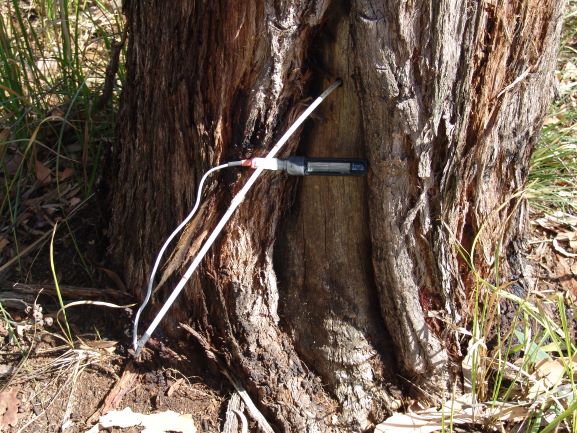There are two big issues with a tree infested with termites.
Firstly, the termites can decimate the tree structure to the point where it becomes unstable and falls. Secondly, the termites can move on from the tree and into a nearby property structure.
Neither is a desirable outcome, so careful and considered treatment is crucial.
Knowing how to deal with this type of termite infestation is an important skillset for pest managers. Tree treatment is a colony control treatment only, as it is not possible to prevent re-infestation of living or dead trees except by the tree’s complete removal.
Even after tree treatment has taken place, termites may still be active in the vicinity. Further, it is possible a new colony can re-establish in the future within the tree or tree root system. Or, termites from another colony within the vicinity may feed on or establish sub colonies within the tree.
Heed your reporting boundaries
It is important to stay within your professional boundaries and never offer an opinion as to the soundness or health of the tree. A nest in a tree could possibly affect the health and structural safety of the tree but this is unlikely as termites tend to protect the structural integrity of their workings. But, it is possible.
If you give a positive opinion on the tree’s health then part or all of the tree falls down and damages property or people, you could be held responsible.
Or, conversely, if you said it was a risk and the client removed it unnecessarily then they could hold you responsible. Especially if they removed it without permission from their local Council – they might drag you into it as it was your advice they acted on.
Of course, having the right business insurance can help protect you in these situations. But it’s best to not get into these binds in the first place. Heed your reporting boundaries.
Providing the above type of advice is the domain of a qualified arborist/tree surgeon and not termite management. Giving advice on the condition/health of a tree would require specific professional indemnity and general liability cover for arborist/tree surgery work.
Where you are asked an opinion on tree health and soundness always refer your customer to a relevant expert, via appropriate wording in your report. For example, “To establish the health of the tree and to ascertain structural integrity as to whether the tree should or should not be pruned or removed, it is recommended that you consult a qualified arborist proficient in this type of assessment.”
Where trees or stumps present an ongoing risk of termite infestation to the property a recommendation for their removal can be made. Why? You are not assessing the tree itself but only providing an opinion on the risk to the property if termites colonise the tree or stump.
How to spot termites in trees
Remember that some tree species drop branches during the course of their life, or storms may cause limbs/branches to break off and could be wrongly attributed to termite activity in the tree.
So, how to know for sure there is termite activity in the tree…? Have a look at its base – do you see termite wings and/or wood shavings around it? You may also see mud tubes or flight holes on the bark.
A further investigation (upon agreement from your customer) is to test drill the tree to its middle section then insert a temperature probe, as a termite nest is maintained by the termites at around 32 degrees Celsius. Then you will get a real understanding of whether there is any activity.
Also note that by test drilling, the termites (if present) will come to the opening to investigate and then reseal the hole. This may be immediate or over the next several hours.
If called out to check a tree or stump and that is all the client wants, make sure if you carry out a tree treatment that you complete a Certificate of Installation with a written recommendation that a full inspection and report to AS 3660.2-2017 should be carried out to the property.
Even if no tree treatment is carried out, recommend in writing an inspection and report to AS 3660.2-2017.
By doing so you greatly reduce the opportunity for a claim asserting later they would have had the inspection done, now they have discovered termite in the house.
If you have any questions regarding treating termites in trees, please contact our Technical Officer. We are happy to help you further.

